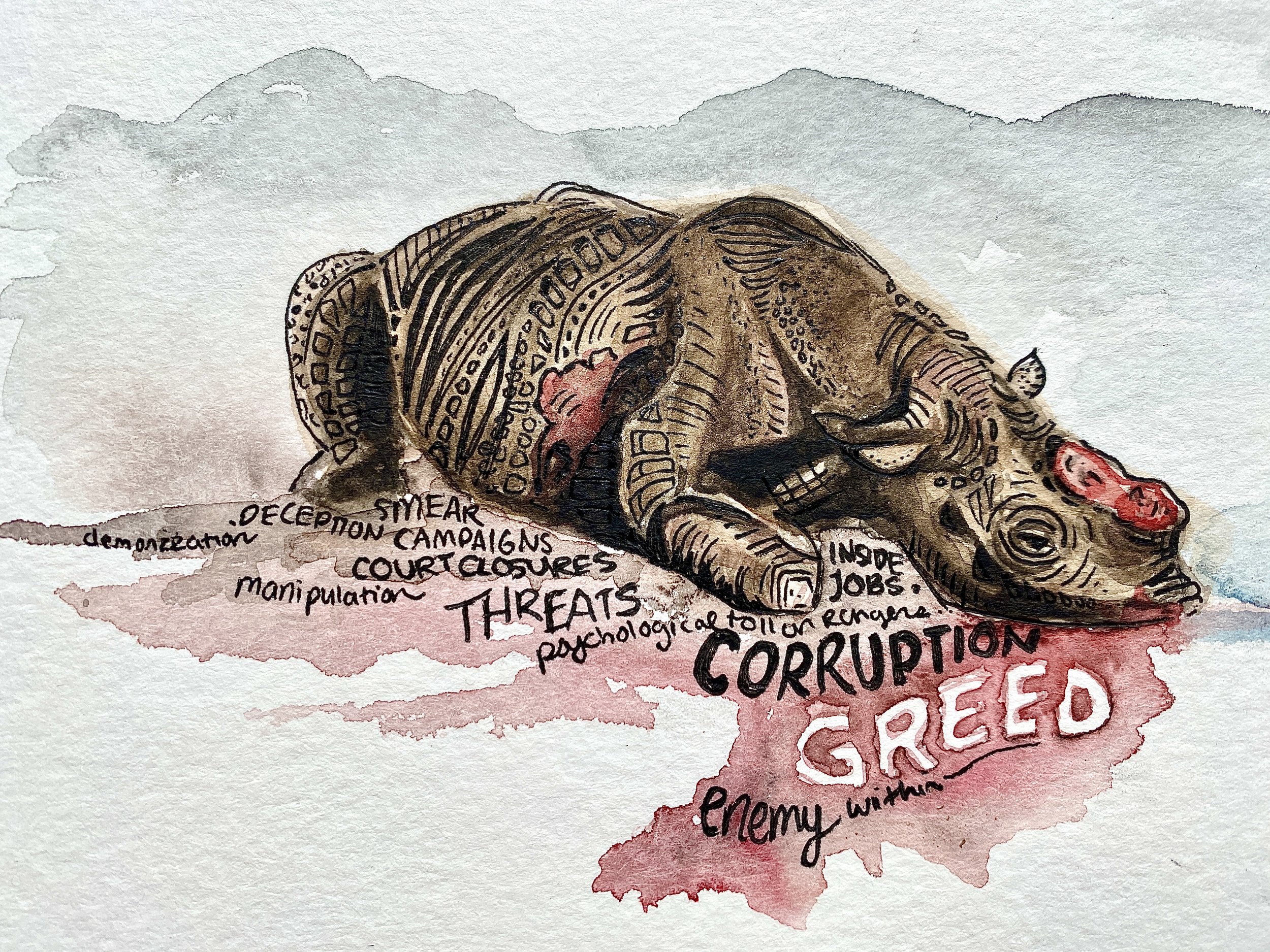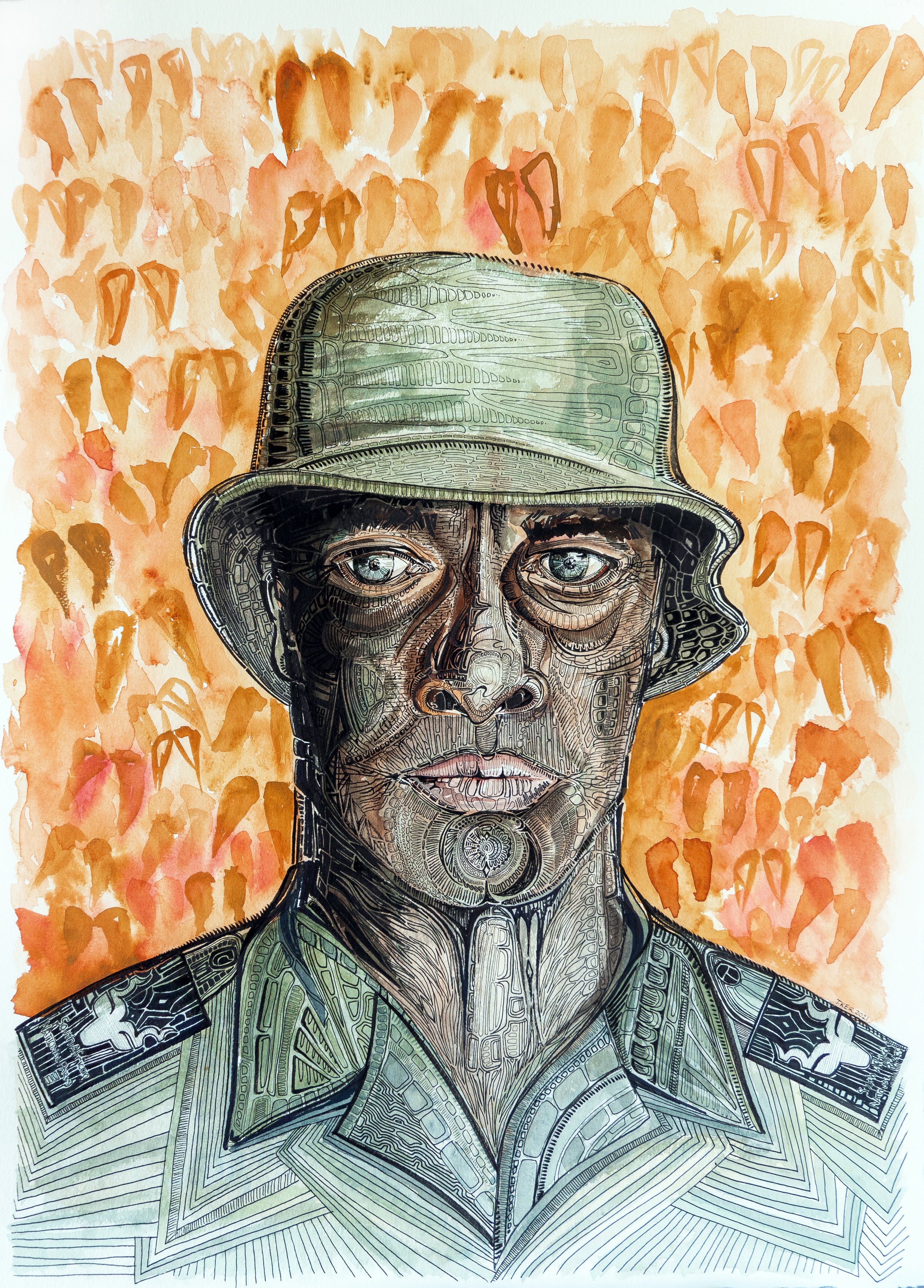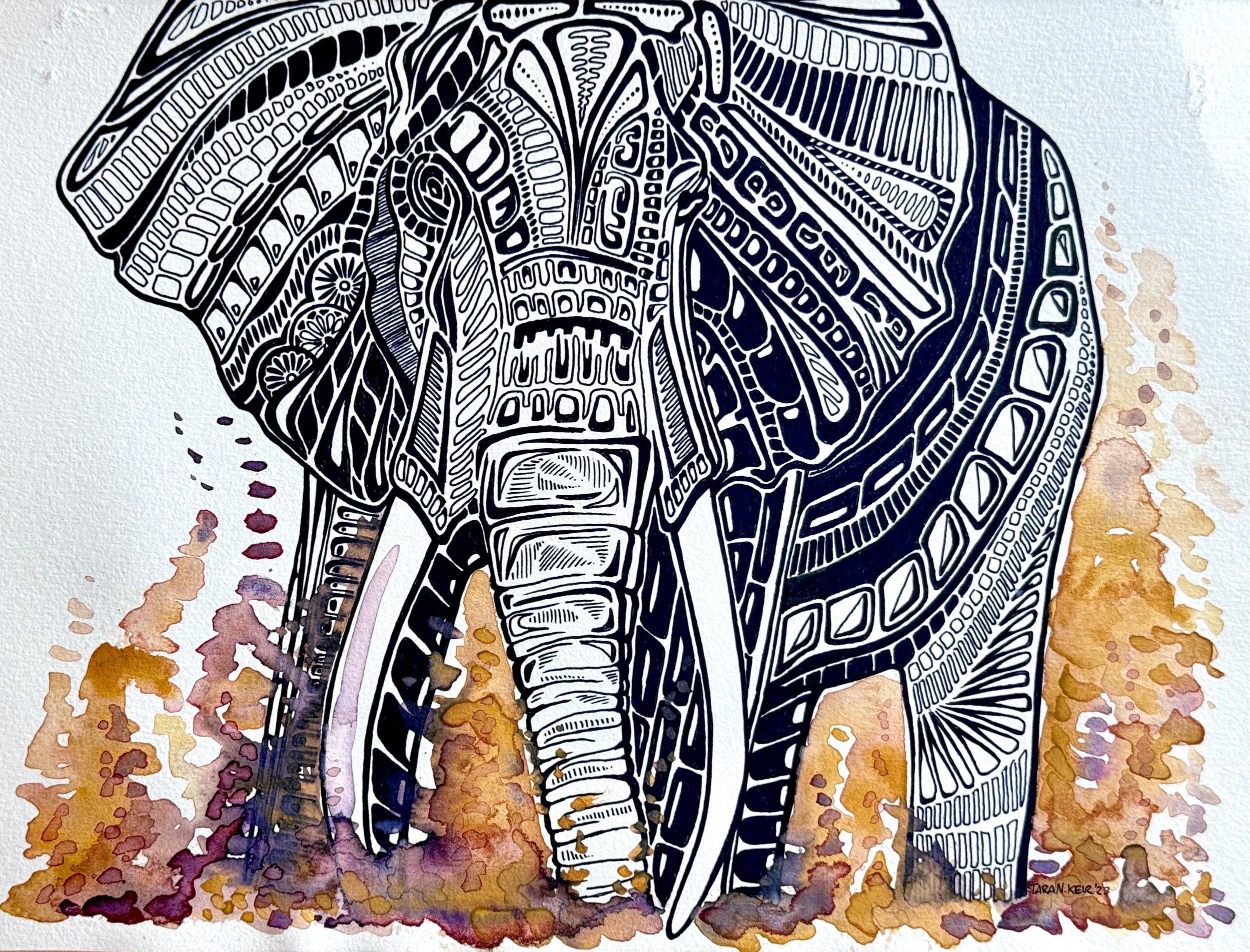TARA KEIR
“As a creative storyteller, I believe art holds such power as a storytelling medium.”
Ranger, Portrait 3,
22.5” x 30”, Watercolor, micron pen and sharpie on watercolor paper
$3750, purchase here
Float (Leatherback Sea Turtle),
15” x 20”, Watercolor and micron pen on watercolor paper
$525, purchase here
Cruising (Great Hammerhead Shark),
15” x 20”, Watercolor, acrylic, and micron pen on watercolor paper
$525, purchase here
Caught Hope (Vaquita),
8” x 10”, Watercolor and sarasa zebra pen on watercolor paper
$200, purchase here
The Charge (African Savanah Elephant),
8” x 10”, Watercolor and sarasa zebra pen on watercolor paper
$225, purchase here
Glide (Manta Rays),
12” x 9”, Watercolor and micropen on watercolor paper
$275, purchase here
Mothers (Dragonfly),
8” x 10”, Watercolor and micropen on watercolor paper
$225, purchase here
Ranger Portrait 2,
22.5” x 30”, Watercolor, micron pen and sharpie on watercolor paper
$3750, purchase here
Ferocious (American Black Bear),
5.5” x 8.5”, Watercolor on watercolor paper
$250, purchase here
Rhino Blues (Southern White Rhinocerous),
8” x 10”, Watercolor and sarasa zebra pen on watercolor paper
$225, purchase here
Stride (African Savanah Elephant),
8” x 10”, Watercolor on watercolor paper
$195, purchase here
Farewell Sudan (Northern White Rinocerous),
7” x 5”, Watercolor on watercolor paper
$200, purchase here
Greed (Poached Black Rinocerous),
7” x 5”, Watercolor and sarasa zebra pen on watercolor paper
$125, purchase here
Perched (Red Siskins),
5” x 7”, Watercolor on watercolor paper
$125, purchase here
Listening (African Wild Dogs),
7” x 5”, Watercolor on watercolor paper
$125, purchase here
Ranger Portrait 1,
22.5” x .30”, Watercolor, micron pen and sharpie on watercolor paper
$3750, purchase here
Psychological Toll (Kruger National Park Ranger),
8” x 10”, Watercolor and sarasa zebra pen on watercolor paper
$250, purchase here
Fierce (African Lioness)
8” x 10”, watercolor on watercolor paper
$250, purchase here
No Rangers, No Rhinos,
22.5” x 30”, Watercolor, micron pen, sharpie and acrylic on watercolor paper
$2,200, purchase here
Formidable (African Elephant),
9” x 12”, Watercolor and sarasa zebra pen on watercolor paper
$225, purchase here
WASHINGTON DC’S BEST ETHIOPIAN RESTAURANT
Growing up in Harrargie, Ethiopia, Tsehay learned from a young age the art of cooking traditional Ethiopian food. Tsehay, the second oldest daughter of 14, helped her mother in the kitchen by grinding the spice berbere and preparing the meals for her family. With the passing of her father at a young age she became the helping hand in the kitchen and backbone in raising her siblings. As she grew older and could join the work force she began to work with Greek and Japanese immigrants to diversify and further hone her cooking skills and passion for food.
Once married, Tsehay moved to Addis Ababa where she raised her family. After some time her love and passion for food led her to open a successful cafe to support her four children. Tsehay was very involved with the food that came out of her kitchen, she did not purchase spices but instead but made everything by hand. She prided herself in the garden she maintained, always producing fresh fruits and vegetables from her own backyard. She frequently visited the local farmers market to ensure the freshness of every ingredients used to prepare her berbere, kibe and shiro, all key ingredients that define the distinct flavors of Ethiopian cuisine. All while continuing the tradition of teaching her own daughters the fine art of spice making and cooking. “slit down, peel all the garlic, shave the garlic, lay it out to dry with black seed, and then grind,” Selam fondly recalls.
Selam has studied and admired her mother’s strength, work and dedication to her craft from childhood and into adulthood, she is grateful to now share it with the world. As a dedication to Tsehay, the restaurant will put the same love and passion into every dish we send out of the kitchen.
TSEHAY
ON DISPLAY AT
FROM THE ARTIST
As a creative storyteller, I believe art holds such power as a storytelling medium. When paired with thought-provoking words and hard-hitting facts, we can creatively connect people with conservation stories in ways that deeply resonate, particularly when it comes to exploring how humans and wildlife intersect.
Each piece of artwork I create has a story and a purpose. Species around the globe are facing a wide array of crises impacting their ability to survive on this planet. The difficult reality is that these challenges to their survival are most often rooted in threats from humans activity.
Through my artwork, I highlight the human side of wildlife stories around the globe in an effort to help wide audiences connect with these stories in a meaningful way. Each piece of artwork, whether a print or original, has a percentage of the proceeds given back to an organization working to protect the species represented in that piece of art. I want our love for wildlife to go beyond a love strong enough to have an elephant, lion, or [insert your favorite animal here] in an exalted spot on our walls, and instead become a love which fuels a far deeper connection. My art and the stories behind it are meant to not only connect us with wildlife through understanding the conservation threats they face, but also by connecting us to the human side of coexistence.
ABOUT TARA KEIR
Tara Keir is a DC-based artist and National Geographic Explorer whose vibrant works weave together the worlds of art, conservation and creative storytelling. Tara is best known for her paintings which inspire personal reflection on our complex relationships with wildlife, reconnecting humans to the truth that we are wildlife ourselves. Tara transforms her experiences and human-wildlife investigations into dynamic visual narratives depicting the immense beauty of the natural world and our nuanced relationship with species and ecosystems under threat.
As a child in Upstate New York, Tara spent mornings alongside her father watching the woods wake up. These magical dawns exposed Tara to the closeness we share with ecosystems, and created a lasting relationship of comfort for her among any wild space. This deep-rooted love for wildlife also manifested beyond New York forests and within a five-year-old’s overwhelming love for elephants and their “built-in snorkels.” A lived combination of the two ultimately inspired Tara to focus her undergraduate geography studies on conservation biogeography at SUNY Geneseo with a minor in environmental sciences. During a post graduate internship with the National Geographic Society, Tara’s eyes were opened up to the world of wildlife crime, intertwining her love of wildlife and geography. This set her on a path of dedicated passion, determined to inspire thoughtful and in-depth approaches to understanding and communicating the human side of wildlife crises around the globe.
As a creative storyteller, Tara’s work thrives at the intersection of art and social engagement. Her multidisciplinary work educates and challenges individuals to critique how we view ourselves within conservation stories. Tara believes art holds incredible power as a storytelling medium and catalyst for positive change. She has used her artwork extensively in several projects funded by the National Geographic Society. This includes a storytelling grant investigating the rhino poaching crisis in South Africa with stories told through the lens of rangers faced with the challenge of inside involvement, as well as a collaborative book project (Constructive Visions) in which Tara authored and illustrated the “Future of Wildlife Conservation” chapter in which readers learn lessons in coexistence from wildlife. Her work has also been separately commissioned by National Geographic for an educational social media campaign on elephants during this year’s Earth Month, and selected for Explorers Against Extinction’s Sketch for Survival competition.
Tara is also a writer, investigative journalist, and geographer. By approaching storytelling with art at the forefront, Tara proves that artwork can creatively connect people with conservation stories in ways that deeply resonate, particularly when it comes to exploring our role in securing a positive future for our planet.






















